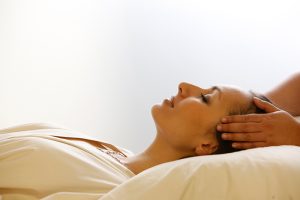Skin Micropigmentation: How Does It Work?
Each day, you lose between 50 and 100 scalp hairs. This is considered normal.
Unfortunately, millions of people lose more than this for a variety of reasons. If you suffer from thinning hair or hair loss, you may be looking for a viable solution to fix this issue or prevent it from getting worse.
While there are several treatment options to consider, one worth mentioning is skin micropigmentation. This treatment can now be used on the scalp to help with lost or thinning hair. Keep reading to learn more.
Who Can Benefit from Scalp Micropigmentation?
The ideal candidates for skin micropigmentation for hair loss are individuals who deal with one of the following issues:
- Post hair transplant patients
- Scalp scars
- Female patterned baldness
- Male patterned baldness
Men who deal with excessive scarring of the scalp or on the beard or mustache area of the face can also benefit from this treatment. You can find more info about this here.
How Does Scalp Micropigmentation Work?
The goal of the procedure is not to create hairlike lines, which is what is done when microblading eyebrows. Instead, layered dots in different colors of black are applied. This replicates the look of a shadow on the scalp.
The official name of this is pointillism. It helps create a more natural definition and depth.
It’s important to find a skilled practitioner. This individual will work to make sure the dots look like your natural hair follicle and that they blend in well with your complexion.
Is Scalp Micropigmentation Painful?
Unfortunately, there’s no simple answer to this. The pain level depends on a few factors.
Before starting the process, your practitioner should apply a topical numbing agent to the area being treated. While this helps with the pain, there still may be discomfort.
In most cases, this depends on an individual’s pain tolerance.
If you have skin issues, such as psoriasis or acne, you should avoid having this procedure done during a breakout. That’s because the pigment may not adhere to the inflamed areas properly.
Also, if someone is likely to develop keloids, they should avoid this treatment.
Aftercare Tips
After the procedure, there are a few things to remember. For example, you should avoid steam rooms, saunas, and swimming for 28 days.
You should also avoid the sun for 28 days and avoid extensive exercise for approximately five days.
It’s necessary to moisturize the treated area after four days have passed.
Skin Micropigmentation for Hair Loss
Finding a viable way to combat the problem is likely a top priority if you deal with hair loss. An option to consider is skin micropigmentation for the areas where you are dealing with thinning hair or hair loss.
Just remember to find an experienced practitioner to achieve the best results.
Learn more about innovative treatments and other topics by checking out some of the other blogs on our website.






